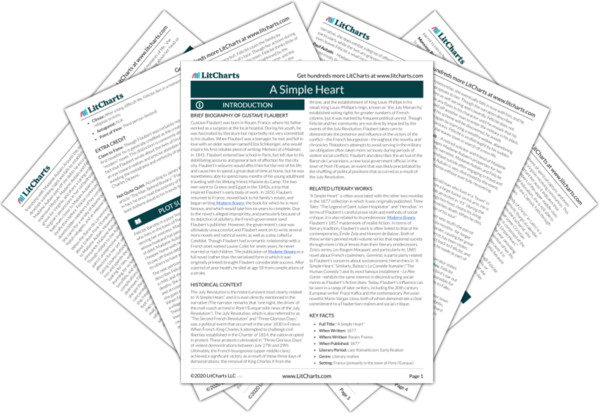Welcome to the LitCharts study guide on Gustave Flaubert's A Simple Heart. Created by the original team behind SparkNotes, LitCharts are the world's best literature guides.
A Simple Heart: Introduction
A Simple Heart: Plot Summary
A Simple Heart: Detailed Summary & Analysis
A Simple Heart: Themes
A Simple Heart: Quotes
A Simple Heart: Characters
A Simple Heart: Terms
A Simple Heart: Symbols
A Simple Heart: Literary Devices
A Simple Heart: Theme Wheel
Brief Biography of Gustave Flaubert

Historical Context of A Simple Heart
Other Books Related to A Simple Heart
- Full Title: “A Simple Heart”
- When Written: 1877
- Where Written: Rouen, France
- When Published: 1877
- Literary Period: Late Romanticism; Early Realism
- Genre: Literary realism
- Setting: France (primarily in the town of Pont-l’Eveque)
- Climax: After a long, difficult life, Félicité dies in a moment of religious ecstasy.
- Antagonist: N/A
- Point of View: Third-person (limited)
Extra Credit for A Simple Heart
Claim to Fame. Though Flaubert was certainly not the world’s first novelist, he is generally credited as the creator of the “modern” novel. This distinction is commonly attributed to the fact that Flaubert wrote about the lives of his protagonists with an eye toward realism and precise attention to language, avoiding the melodrama and verbosity of popular writers like Charles Dickens.
Not Quite Quiet. According to James Wood’s New York Times article “The Man Behind Bovary,” “Flaubert loved to read aloud.” In fact, he once read the entirety of his novel The Temptation of Saint Anthony aloud to his friends for 32 hours.







